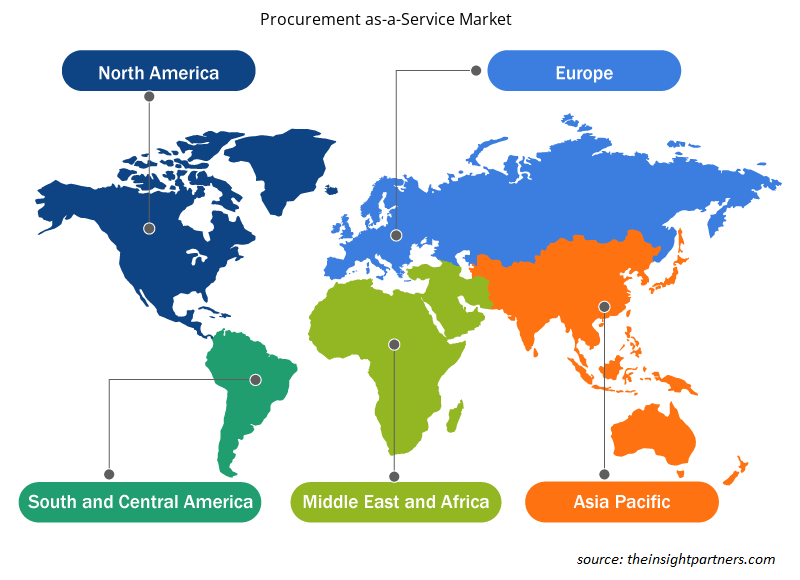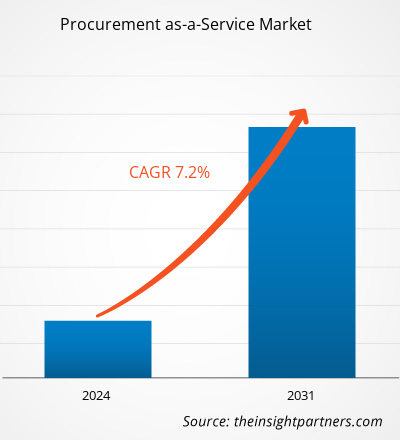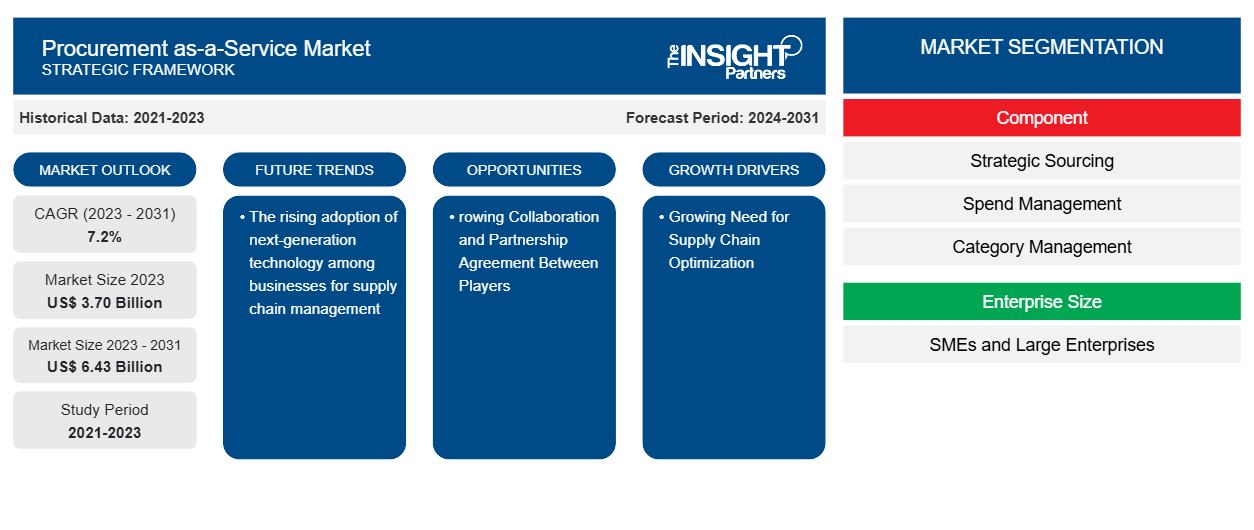調達サービス市場規模は、2023 年の 37 億米ドルから 2031 年には 64 億 3,000 万米ドルに達すると予測されています。市場は 2023 年から 2031 年にかけて 7.2% の CAGR を記録すると予想されています。サプライ チェーン管理のための企業による次世代テクノロジーの採用の増加は、調達サービス市場の重要なトレンドであり続けると思われます。
調達サービス市場分析
調達サービス市場は、サプライチェーンの最適化に対するニーズの高まりと、世界中での輸出入活動の増加により、急速に成長しています。市場は、ワークフローの自動化に向けたデジタル化を推進する政府の取り組みに牽引され、着実に拡大しています。さらに、プレーヤー間のコラボレーションとパートナーシップ契約の増加は、市場の成長に有利な機会を提供しています。
調達サービス市場の概要
PaaS (Procurement as a Service) は、組織の調達要件を満たすためにリソース (人材、ツール、知識) を組み合わせた調達のアウトソーシング モデルです。今日、多くの組織は、最初の問い合わせから最終的な請求書まで、購入プロセス全体をコンピューターで管理しています。さらに、デジタル調達では、トランザクションの自動化を促進するために破壊的なテクノロジが使用されています。さらに、戦略的調達やサプライヤー管理などの予測的かつプロアクティブな運用が可能になり、組織の運用コストが削減されます。コンプライアンス規制や契約を処理しながら調達業務を合理化するビジネス ニーズの高まりが、市場を牽引しています。
要件に合わせてレポートをカスタマイズする
このレポートの一部、国レベルの分析、Excelデータパックなど、あらゆるレポートを無料でカスタマイズできます。また、スタートアップや大学向けのお得なオファーや割引もご利用いただけます。
-
このレポートの主要な市場動向を入手してください。この無料サンプルには、市場動向から見積もりや予測に至るまでのデータ分析が含まれます。
調達サービス市場の推進要因と機会
サプライチェーン最適化の必要性の高まり
サプライ チェーン マネージャーは、サプライ チェーン全体の運用を監視するために調達管理サービスを積極的に採用しています。これらのサービスにより、サプライ チェーン マネージャーはサプライ チェーンの潜在的な問題を大幅に予測し、それに応じてリソースを再割り当てできます。さらに、サービスとしての調達は、ビジネス プロセスの効率を向上させるために使用する信頼性の高いデータ駆動型ソリューションを生成することができます。調達管理ソフトウェアは、ユーザーが定常運用を管理し、部門間の可視性を高めるのに役立つ例外ベースのプロセス管理システムを提供します。その結果、消費者は、サプライ チェーンの透明性、注文の開示、出荷データを維持するために、調達管理ソフトウェアにますます投資するようになっています。
プレーヤー間のコラボレーションとパートナーシップ契約の拡大 – サービスとしての調達市場におけるチャンス
技術の進歩と、クラウドコンピューティング、AI、データ分析、MLテクノロジーに対する市場プレーヤーのサービス提供強化の需要の高まりにより、市場にチャンスが生まれています。さらに、消費者の間で技術的に高度なサービスに対する需要が高まっているため、市場プレーヤーは革新的なソリューションを開発したり、既存のポートフォリオに機能を追加したりしています。たとえば、2022年11月、Corbus、LLCはGISとサプライチェーン調達パートナーシップ契約を締結し、独自のソリューションを開発しました。このパートナーシップにより、GISはヨーロッパ、ラテンアメリカ、北米、アジア、中東、アフリカの顧客にインフラストラクチャとリソースを提供できるようになります。
調達サービス市場レポートのセグメンテーション分析
調達サービス市場分析の導出に貢献した主要なセグメントは、コンポーネント、企業規模、およびエンドユーザーです。
- コンポーネントに基づいて、市場は戦略的調達、支出管理、カテゴリ管理、プロセス管理、契約管理、およびトランザクション管理に分類されます。支出管理セグメントは2023年に大きな市場シェアを占めました。
- 企業規模別に見ると、市場は中小企業と大企業に分かれており、2023年には大企業セグメントがより大きな市場シェアを占めました。
- エンドユーザーに基づいて、市場はITと通信、消費財と小売、製造、エネルギーとユーティリティ、ヘルスケア、ホスピタリティと観光、その他に分類されています。製造セグメントは2023年に市場で最大のシェアを占めました。
地域別調達サービス市場シェア分析
調達サービス市場レポートの地理的範囲は、主に北米、アジア太平洋、ヨーロッパ、中東およびアフリカ、南米/中南米の 5 つの地域に分かれています。
収益面では、北米が、サプライチェーンを強化するためのAI、ブロックチェーン、およびその他のテクノロジーの技術進歩と統合により、調達サービス市場最大のシェアを占めました。企業のデジタル化を促進するための政府の多額の投資が、この地域の市場を活性化させています。デジタル化の進展により、市場プレーヤーは調達プロセスを合理化するためにデジタルテクノロジーを採用するよう促され、北米の市場を活性化させています。
調達サービス市場の地域別分析
予測期間を通じて調達サービス市場に影響を与える地域的な傾向と要因は、Insight Partners のアナリストによって徹底的に説明されています。このセクションでは、北米、ヨーロッパ、アジア太平洋、中東、アフリカ、南米、中米にわたる調達サービス市場のセグメントと地域についても説明します。

- 調達サービス市場の地域別データを入手
調達サービス市場レポートの範囲
| レポート属性 | 詳細 |
|---|---|
| 2023年の市場規模 | 37億ドル |
| 2031年までの市場規模 | 64.3億米ドル |
| 世界のCAGR(2023年~2031年) | 7.2% |
| 履歴データ | 2021-2023 |
| 予測期間 | 2024-2031 |
| 対象セグメント |
コンポーネント別
|
| 対象地域と国 |
北米
|
| 市場リーダーと主要企業プロフィール |
|
調達サービス市場のプレーヤー密度: ビジネスダイナミクスへの影響を理解する
調達サービス市場は、消費者の嗜好の変化、技術の進歩、製品の利点に対する認識の高まりなどの要因により、エンドユーザーの需要が高まり、急速に成長しています。需要が高まるにつれて、企業は提供内容を拡大し、消費者のニーズを満たすために革新し、新たなトレンドを活用し、市場の成長をさらに促進しています。
市場プレーヤー密度とは、特定の市場または業界内で活動している企業または会社の分布を指します。これは、特定の市場スペースに、その市場規模または総市場価値に対してどれだけの競合相手 (市場プレーヤー) が存在するかを示します。
Procurement as a Service 市場で事業を展開している主要企業は次のとおりです。
- アクセンチュア
- キャップジェミニ
- コルバス
- 有限責任会社
- ジェンパクト株式会社
- ジェップ
免責事項:上記の企業は、特定の順序でランク付けされていません。

- 調達サービス市場のトップキープレーヤーの概要を入手
調達サービス市場のニュースと最近の動向
調達サービス市場は、主要な企業出版物、協会データ、データベースなどの一次調査と二次調査後の定性的および定量的データを収集することで評価されます。以下は、調達サービス市場の動向と戦略のリストです。
- 2024 年 2 月、Vodafone Group Plc と International Machine Business Corp は業界レベルで協力し、GSMA ポスト量子通信ネットワーク タスクフォースを主導します。このタスクフォースは、特にポスト量子暗号が世界の通信サプライ チェーン全体で採用される中で、パートナーと顧客の量子耐性への取り組みをサポートします。(出典: Vodafone Group Plc、プレス リリース、2024 年)
調達サービス市場レポートの対象範囲と成果物
「サービスとしての調達市場規模と予測(2021〜2031年)」レポートでは、以下の分野をカバーする市場の詳細な分析を提供しています。
- 対象範囲に含まれるすべての主要市場セグメントの世界、地域、国レベルでの市場規模と予測
- 市場の動向(推進要因、制約、主要な機会など)
- 今後の主な動向
- 詳細なPEST/ポーターの5つの力とSWOT分析
- 主要な市場動向、主要プレーヤー、規制、最近の市場動向を網羅した世界および地域の市場分析
- 市場集中、ヒートマップ分析、主要プレーヤー、最近の動向を網羅した業界の状況と競争分析
- 詳細な企業プロフィール
- 過去2年間の分析、基準年、CAGRによる予測(7年間)
- PEST分析とSWOT分析
- 市場規模価値/数量 - 世界、地域、国
- 業界と競争環境
- Excel データセット
最新レポート
お客様の声
購入理由
- 情報に基づいた意思決定
- 市場動向の理解
- 競合分析
- 顧客インサイト
- 市場予測
- リスク軽減
- 戦略計画
- 投資の正当性
- 新興市場の特定
- マーケティング戦略の強化
- 業務効率の向上
- 規制動向への対応























 無料サンプルを入手 - 調達サービス市場
無料サンプルを入手 - 調達サービス市場